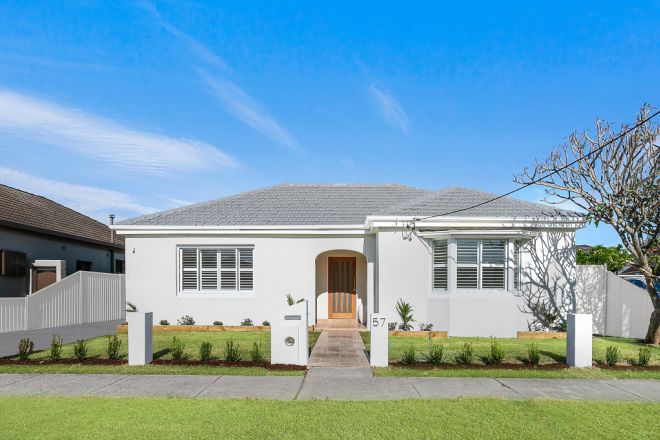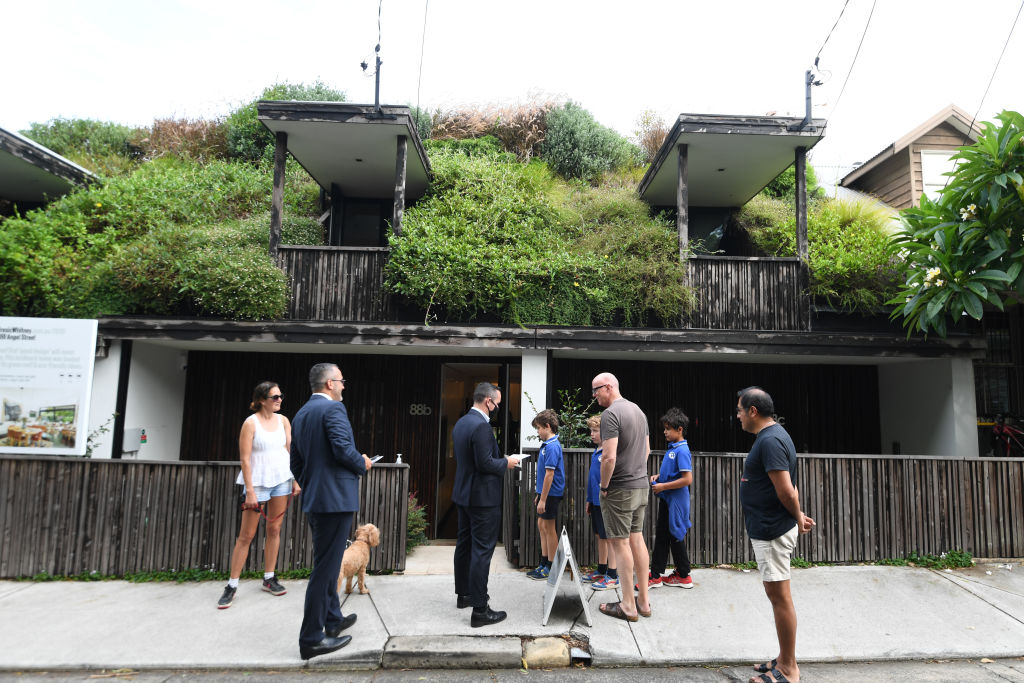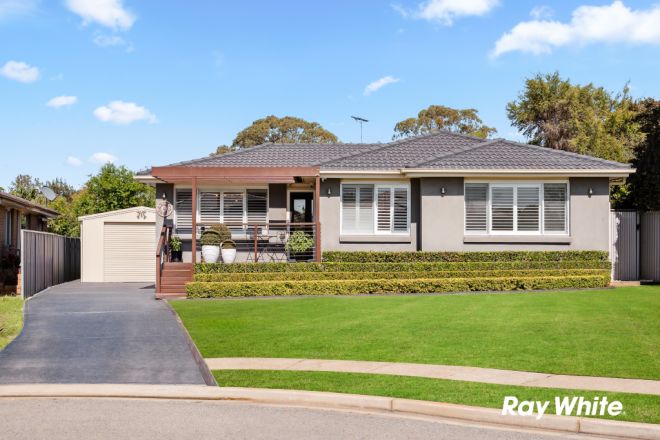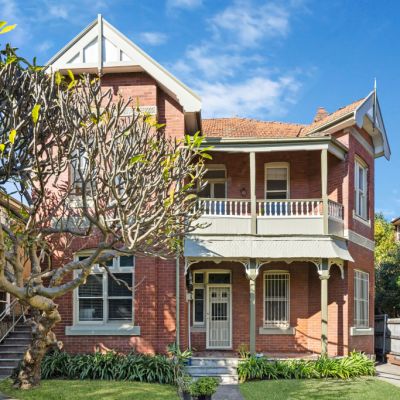How has Australia's property market bounced back while interest rates and the cost of living are so high?
Median house prices across the combined capital cities have almost fully recovered from the downturn of 2022, but in a market where interest rates have risen and inflation is high, how has the market reached near-record prices so quickly?
The latest Domain House Price Report, released on Thursday, measures the combined capital’s median house price at $1,072,480, up 1.9 per cent over the quarter and 5.1 per cent year-on-year.
The combined median unit price is $622,734, up 1.8 per cent over the third quarter and 2.7 per cent year-on-year.
According to the report, house prices are about $2000 away from reaching a new peak price and surpassing the record median reached in March 2022, while units are $5000 away from their peak reached in December 2021.
House prices have risen in all capital cities in the three months to September and have moved into a recovery phase. Sydney leads the charge, having increased by 9.4 per cent from its price trough, followed by Brisbane, up 4.8 per cent from its lowest point.
Against the backdrop of rising interest rates – which have held steady at 4.1 per cent since June but are now tipped to rise next week due to a spike in monthly inflation – it seems at odds that property prices could just keep getting more expensive. The trend raises fresh concerns about housing affordability, with those yet to enter the market despairing over what seems to be an insurmountable issue.
| Region | Price peak | Price trough | Downturn | Recovery to date | Shortfall from price peak | |||
| Per cent | Dollar | Per cent | Dollar | Per cent | Dollar | |||
| Combined capitals | Mar-22 | Dec-22 | -5.5% | -$58,892 | 5.6% | $57,226 | -0.2% | -$1,667 |
| Sydney | Mar-22 | Dec-22 | -9.3% | -$148,092 | 9.4% | $135,705 | -0.8% | -$12,387 |
| Melbourne | Dec-21 | Mar-23 | -6.6% | -$72,094 | 1.0% | $9,982 | -5.7% | -$62,113 |
| Brisbane | Jun-22 | Dec-22 | -5.5% | -$47,381 | 4.8% | $39,020 | -1.0% | -$8,361 |
| Adelaide | Sep-23 | – | – | – | At peak | At peak | At peak | At peak |
| Perth | Sep-23 | – | – | – | At peak | At peak | At peak | At peak |
| Canberra | Jun-22 | Jun-23 | -12.8% | -$151,050 | 1.8% | $18,082 | -11.3% | -$132,968 |
| Darwin | Sep-21* | Mar-23 | -13.7% | -$89,620 | 2.6% | $14,717 | -11.5% | -$74,902 |
| Hobart | Mar-22 | Mar-23 | -8.3% | -$63,555 | 2.4% | $16,947 | -6.1% | -$46,608 |
| Source: Domain, powered by APM. House Price Report, Sep-23. Downturn compares prices from peak to trough. Recovery compares prices from trough to now. *During the pandemic upswing, Darwin house prices did not surpass the previous record held in Dec-13, therefore, the figure reflects the pandemic price peak in Sept-21 and pandemic price trough in Mar-23 – reflecting the current price cycle. | ||||||||
Let’s rewind
Let’s take it back to 2020. Not long after bushfires had wreaked havoc across Australia, COVID-19 entered. The onset of lockdown restrictions and border closures, both state and international, had economists forecasting the housing market would plummet, with price fall predictions of 10 to 20 per cent.
Instead, a drop in interest rates over the year was the key driver in spurring activity by owner-occupiers and investors.
Several other factors were added into the mix, including work-from-home setups, buyers wanting more space while locked down, demand for sea and tree change properties, and the federal government’s HomeBuilder package, which set off a construction boom – all of which created the perfect storm for skyrocketing house prices.
The fear of missing out drove the number of bidders at auctions upwards, resulting in record auction clearance rates for cities like Sydney and Canberra.
Over the next couple of years, cash rates remained at an all-time low of 0.1 per cent, giving buyers access to cheap borrowing.
All capital city housing markets but Darwin reached record prices. Melbourne was the first to reach its peak price in December 2021, followed by Sydney and Hobart in March 2022. In this time, the combined capitals’ median house price soared past $1 million in December 2021.
Cash rate increases
At the start of 2022, many capitals eased lockdown restrictions and reopened their state borders – including Melbourne – and with the pandemic in the rear-view mirror, the economy had reached a level of normality.
But inflation was rising. In May, the Reserve Bank of Australia (RBA) began lifting its cash rate and began one of the most aggressive rate-rise cycles seen in decades.
The impact of those rate rises on the property market was almost immediate. Property prices began to fall, led by Sydney, and by the end of 2022, the national median house price had recorded its steepest quarterly fall on record. Annually, prices had fallen by 5 per cent.
The surprise recovery
One might think that, with interest rate rises and the cost of living – from petrol and groceries to childcare – rising, house prices might fall and stay lower for a while.
That is what the experts thought would happen.
Gareth Aird, head of Australian economics at CBA, says the turnaround in prices “surprised almost every analyst, including the Reserve Bank”.
“Prices were falling all through last year when [the RBA] were raising rates, and they were still raising rates when home prices made the turn, so nobody expected that to happen,” he says.

Domain chief of research and economics Dr Nicola Powell says, “It’s an interesting stage of the property cycle because I think it really depends whether you’re a property owner or not a property owner, and I think that what you tend to see is that when a market moves into a recovery, it happens pretty quickly.
“What’s been unusual for Australia’s housing market is that price cycles have been more frequent over recent years so we are probably seeing shorter and sharper price cycles than … in the past.”
Westpac senior economist Matthew Hassan says the speed of Australia’s property recovery has also taken everyone by surprise.
“We did see something a little bit similar through the global financial crisis in 2008, where we got a sharp fall and then a sharp rebound,” he says.
What’s driving this recovery?
In a nutshell, it’s population growth. With international borders open, a backlog of migrants is entering Australia with their sights set on property both in the leasing and sales markets, which has put upward pressure on prices.
“We’ve seen an extraordinary surge in migration flows in the last year, and where the turnaround in prices has been strongest is in the markets that have seen the strongest lift in population growth – so we’re thinking Sydney, Melbourne in particular,” Hassan says.
“At the other end of the spectrum, the likes of Hobart and Canberra have been slower to recover, with prices drop lower until very recently.”
Domain data shows that Canberra was the final city to reach a price trough and has the most to recover, at 11.3 per cent, followed by Darwin and Hobart at 11.5 per cent and 6.1 per cent, respectively.

“It’s not often that you get such a direct link between population flows and housing markets,” Hassan says.
“Not many new migrants would be purchasing property immediately, they usually take a year or so … so what you’d expect is that they’ll feed into the rental market which should see more investors but we haven’t really seen it so far, so it’s put pressure on the rental market too.”
Australia’s vacancy rate sits at a very tight 0.8 per cent in September, down from 0.9 per cent the previous year.
So what happens now?
While rising property prices are welcome news for sellers, anyone buying in a rising market – particularly one that is close to peak prices – will find it difficult.
“Affordability is becoming extremely stretched for respective buyers,” Hassan says. “We’re seeing it play out through … subdued turnover. The price side of things is resurging and with momentum, and there’s a strong expectation around that.”
The dire need for housing is weighing heavily on property prices, Aird says.
“There’s just such a mismatch now between underlying demand for housing, in terms of the population growth, against some pretty constrained supply,” he says.
“There are a lot of problems in the building industry at the moment and new construction is just not keeping up with the required numbers given growth in the population, and so there’s just an imbalance now in the housing market where rents are growing very strongly.”

Hassan says the need for more supply to cater to demand has been a “chronic problem in the Australian economy” for many years.
“The onset of these problems was 20 years ago when we had a sustained acceleration of population growth from about the early 2000s, and at no stage have we managed to keep pace in terms of new buildings,” he says.
“We did very briefly in the late 2010s – in 2018/19 – when we had a huge high-rise construction boom in Sydney and Melbourne, but that was pretty brief and doesn’t look to have provided enough to catch up and we’re now back to square one but in a worse situation now.”
Looking ahead
Should more stock come to market it will help subdue price growth, but price rises are still expected to continue into 2024, Aird says.
“If the Reserve Bank cuts rates at some stage, that’s going to provide a massive tailwind on home prices at a time when they’re already elevated relative to income,” he says.
“But we can’t see this story changing around the heightened rental market, the very low vacancy rates, the mismatch between the … growth in population versus the growth in the housing stock. We just can’t see that changing in the next 12 to 18 months. There’s nothing really that we can see that’s going to cause affordability to improve in the short run.”
Powell echoes Aird’s comments but says the rate of growth will soften.
“What we saw earlier in 2023 was unusual,” she says. “It was a real bounce-back because we’d seen such a strong pullback from sellers, but sellers are now coming to the market and I think that will ease the pace of price growth.”

How the market opens in the new year will be telling, Hassan adds.
“Where we open next year is going to be the real test to respective buyers,” he says. “Many buyers might be priced out, so I’d look to see how that shapes up.
“It’s going to be unusual because we figured that the RBA has now finished its tightening cycle, but there might be more rate rises to come if inflation proves to be the problem but the bulk of tightening is done.
“The next move, at some stage, will be interest-rate cuts, and typically that gives support to the housing market – but also drives so much of price gains.”
We recommend
States
Capital Cities
Capital Cities - Rentals
Popular Areas
Allhomes
More










